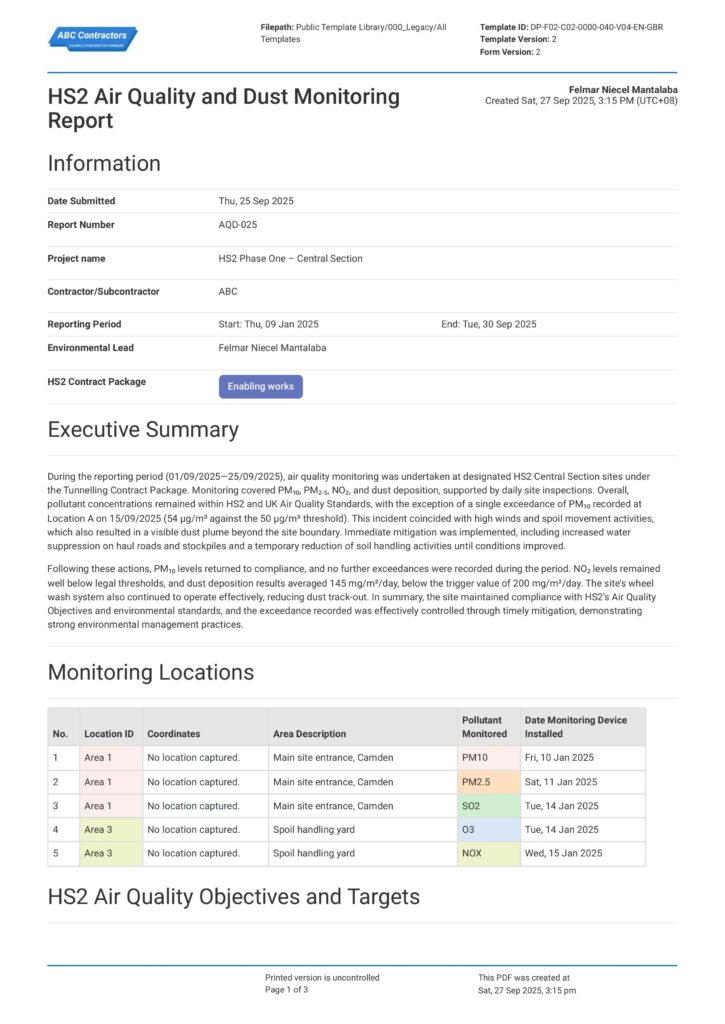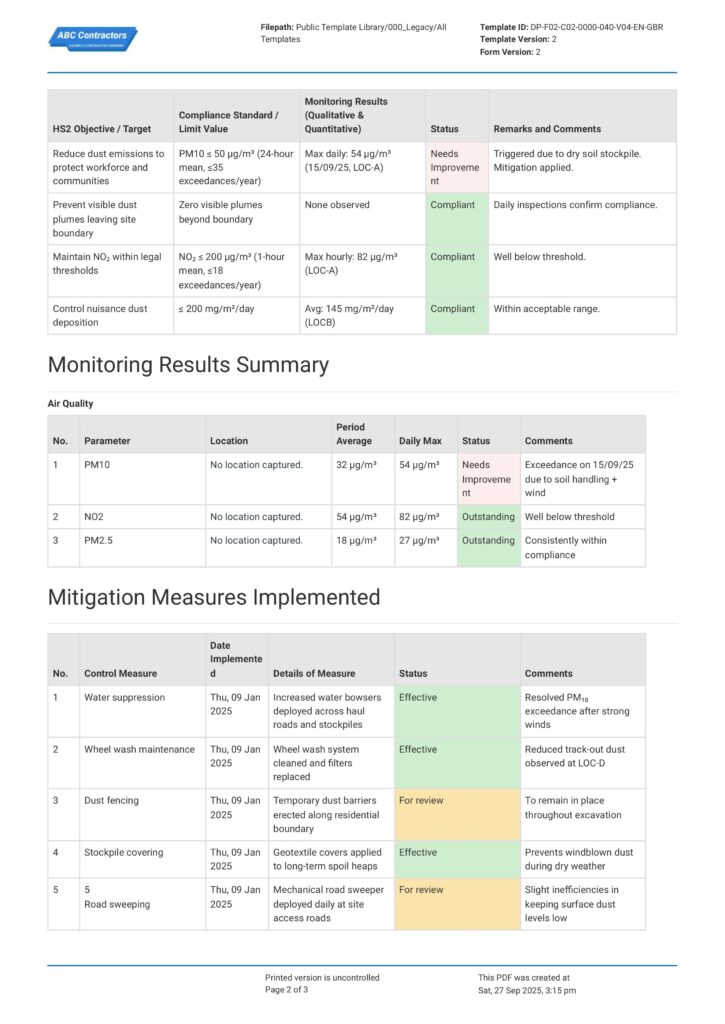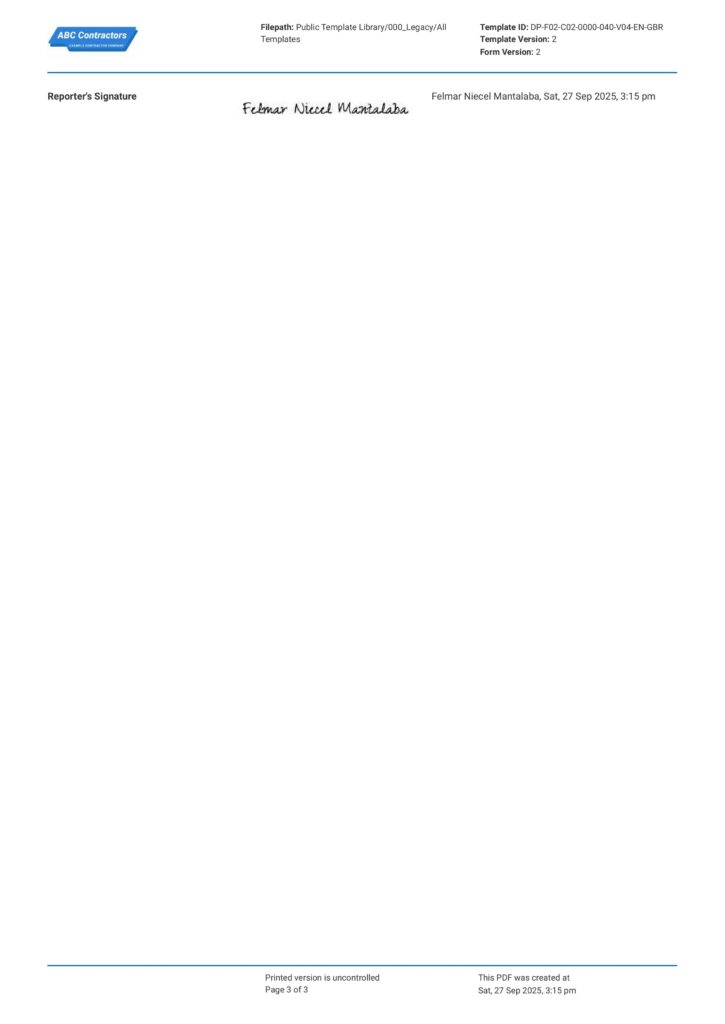HS2 Air Quality and Dust Monitoring Report Template
Start with a free 30-day trial. No credit card required.
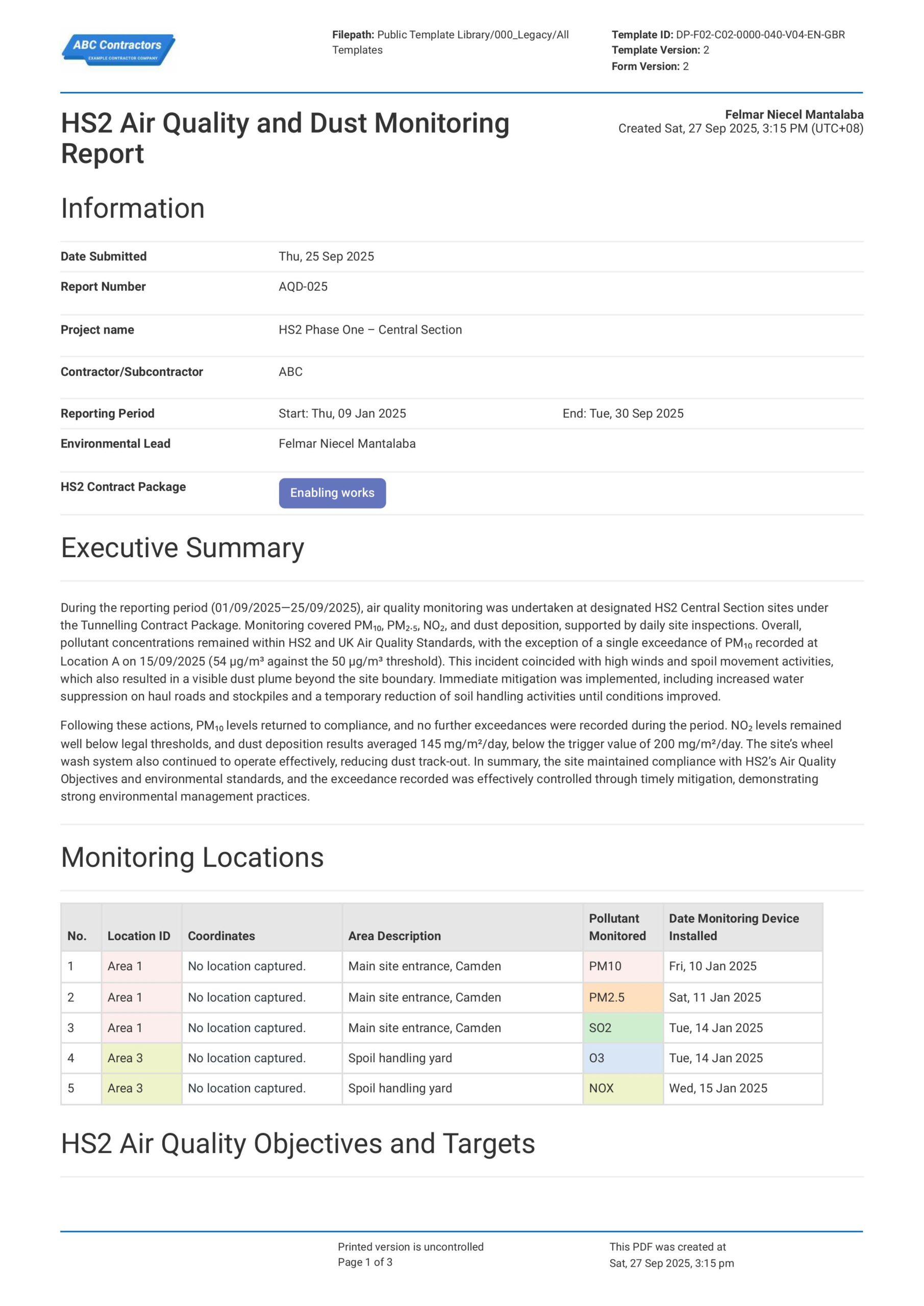
~10,000 employees
~500 employees
~25,000 employees
~20 employees
~50 employees
~1,500 employees
~20 employees
What is an HS2 Air Quality and Dust Monitoring Report?
An HS2 Air Quality and Dust Monitoring Report is a document that includes statistics and an interpretative overview of the status and outcomes of the controls outlined in the Air Quality Strategy for Phase 1 works. Each relevant local authority receives a summary of the air strategy's effectiveness, any complaints received, data recorded during the monitoring period, any periods exceeding agreed trigger levels, and the results of any investigations. If the works are found to be the source of exceedances, action is taken to resolve the issue and prevent recurrence. Overall, the report outlines the activities needed to improve the air quality on the UK High Speed 2 UK project.
Compare this HS2 Air Quality and Dust Monitoring Report to paper-based forms created from Word, Excel, or PDF
Use this HS2 Air Quality and Dust Monitoring Report template for free.
HS2 Air Quality Monitoring Methods and Equipment for Construction
HS2 UK places high emphasis on maintaining excellent air quality during the construction of the High Speed 2 Railway. One way to achieve this is to provide accurate data on the generated pollutants during construction and provide measures to mitigate generation. Here are some methods and equipment that you could employ to monitor pollutants during your activities on the High Speed 2 rail line.
Automatic Air Quality Monitors (data for the HS2 Air Quality and Dust Monitoring Report)
Automatic air quality monitoring stations (monitors) are the most advanced air quality monitoring devices. The public receives information from automatic monitors that pull in air and detect pollution concentrations in the sample. To guarantee that data provided is correct and dependable, a high level of operation is necessary, which includes operator training, frequent maintenance, calibrations, and rigorous quality assurance/quality control procedures.
Dust Deposition Gauges
Dust deposition gauges are a low-cost, dependable method of performing simple non-real-time dust monitoring. They are designed to determine the mass of particles that settle from ambient air during a reporting period. Particles are collected on a glass funnel and enter a vessel below after rainfall during the sampling period.
Handheld Monitoring Devices
Portable air quality monitors are another way to assess air pollution, which provides a more comprehensive and real-time perspective of air quality than stationary monitoring stations. These enable the environmental team to gather real-time data from several sites, assisting in identifying pollution hotspots and guiding a better approach to the construction of the high speed 2 rail. Furthermore, they enable companies to take charge of air quality monitoring by giving real-time information that stationary sensors may overlook.
Meteorological Stations
Wind patterns may often transport pollutants across distances; thus, emissions from one region can have an impact on air quality in another. When these emissions comprise pollutants like carbon monoxide (CO) and nitrogen oxides (NOx), they may have an effect on the health of those living near the construction site of the high-speed 2 rail line. A weather station is a collection of equipment and devices used to monitor and record numerous atmospheric characteristics, including temperature, humidity, air pressure, wind speed and direction, precipitation, and solar radiation. This assists HS2 UK in determining where contaminants may be transported and developing measures to prevent them from spreading.
Gravimetric Sampling
Gravimetric air sampling is regarded as the most reliable technique for detecting particle mass concentrations, since it can be sampled at very low detection limits. A sample is obtained by pulling a certain amount of air through a collecting substrate, which is subsequently transmitted for further examination. When sampling gravimetrically, the airborne concentration of a certain material is estimated by combining the analytical results with the amount of air sampled.
HS2 Dust Monitoring Measures and Control Methods
Dust generation is inevitable, which can potentially compromise the health of the workers, community, and surrounding flora and fauna. The HS2 UK wants to ensure that generation is mitigated to a minimum to prevent critical impacts. Here are some effective measures to prevent dust generation.
Water Spraying and Misting
This is the most popular and cost-effective way. It operates on a simple principle: spray water to increase the weight of flying particles, allowing them to settle more rapidly. However, system effectiveness is determined by droplet size, spray angle, water pressure, and nozzle positioning, in addition to just spraying water. Water spray systems are often used at transfer points, conveyor belts, crushers, and loading zones. They're ideal for areas where dust is consistent and water consumption isn't a serious issue.
Covering and sheeting
A dust barrier system is a structure designed to retain dust. These temporary barriers keep dust out of a room during construction, protect surfaces, and ensure proper air quality. They may be formed of protective films, plastic sheets, or air-filtered walls. Dust barriers are often classified into two types: solid barriers and air-filtration barriers. Each kind serves a certain function and provides various benefits based on the project's needs.
Vehicle and Wheel Washing
Wheel wash systems are specialized machines that clean dirt, mud, and other impurities off vehicle tires and undercarriages. They usually consist of a succession of high-pressure water jets and brushes that completely clean the wheels as cars pass by. Wheel wash systems may be deployed at the approach and departure points of construction and industrial sites to ensure that vehicles are clean before they enter public highways.
Reduced Vehicle Speeds
Vehicles going on dirt roads generate dust, particularly when they are moving quickly. According to studies, the concentration of PM10, or dust, increases with vehicle speed. Reducing speed from 40 mph to 20 mph decreases dust emissions by 65%. However, the success of speed restrictions is dependent on law enforcement and the community's desire to follow the regulations.
HS2 Air Quality Reports, Emission Control Measures
In preparing an air quality action plan for the proposed scheme, HS2 has already committed to steps to limit emissions caused by construction operations. These precautions are included in the HS2 Phase 1 Code of Construction Practice (CoCP) and the HS2 Air Quality Information Paper (E31). These measures include construction vehicle emission standards requirements and means for managing their usage via traffic management plans, non-road mobile machinery (NRMM) emission standard requirements, and dust mitigation measures as outlined in the COCP.
Frequently Asked Questions
Why is this the best HS2 Air Quality and Dust Monitoring Report template?
The HS2 Air Quality and Dust Monitoring Report template is the best option because it’s built specifically for contractors working on HS2 projects. It follows HS2 compliance requirements, comes with pre-set sections for monitoring methods, dust suppression techniques, and control measures, and makes reporting fast and consistent across teams. Since it’s digital and easy to use, site managers, subcontractors, and inspectors can all complete and share reports without extra admin work — making it both reliable and practical.
Is this template aligned with HS2 UK data requirements?
Yes – this template is already aligned with HS2 data requirements for air quality and dust monitoring. It includes all the key sections HS2 expects, such as pollutant tracking, dust suppression measures, monitoring methods, and control actions, so contractors can capture and submit information in the right format without extra setup.
Can I edit this HS2 Air Quality and Dust Monitoring Report for my project or company?
Yes – the template is fully editable with simple drag-and-drop functionality. You can build countless document setups using flexible field types like tables, formulas, sketches, photos, and more to capture any kind of data. It also lets you add your company logo, custom headers, and other key structures.
What platforms is this report available in?
This template works seamlessly across all devices — computer, mobile, and tablet. You can edit and complete forms from your desktop or fill them out directly in the field. Once submitted, any record can be instantly generated or exported as a PDF or CSV, giving you the flexibility of Word, Excel, and PDF combined with the efficiency of modern software.
Other popular templates you can use and edit for free
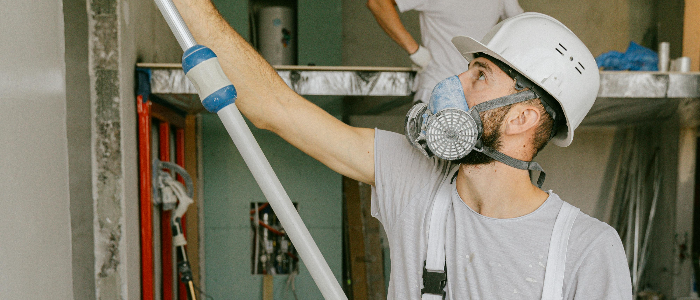
HS2 Air Quality Strategy
Streamline the process of developing strategies for air quality management through smart templates.

HS2 Construction Noise and Vibration Methodology Report
Have a reliable methodology report for logging noise and vibration from HS2 operations.

HS2 Sustainability Progress Report
Ensure projects are sustainable & non-harmful to the environment by using smart sustainable reports.
This report form was generated with Dashpivot
Ensure your report includes all the data required by the HS2. This HS2 Air Quality and Dust Monitoring Report is made to capture all the pollutants and the measures to mitigate them to meet HS2 objectives. This provides an overview of what needs to be improved further to maintain a safe and healthy work environment.
- Complete, edit, and review the HS2 Air Quality and Dust Monitoring Report from any device.
- Export reports as perfectly formatted PDF documents with your company logo.
- Securely store and manage your reports for easy searching and finding.
- Provide accurate location points to where controls and monitoring devices are installed.
Sitemate builds best-in-class software tools for built world companies.
